The History of the Las Vegas Strip: How the City Became a Gambling Hub
The history of the Las Vegas Strip started in 1905 when it was a dead, barren desert serving as a mere railway outpost established by the San Pedro-Los Angeles-Salt Lake Railroad.
Today, the Las Vegas Strip is a top destination for gambling and tourism, boasting some of the world’s largest and most luxurious casinos.
Explore the iconic Strip’s intriguing events and momentous milestones to discover how the Las Vegas Strip has remained intertwined with the history of gambling, entertainment, and casinos.
Highlights of the Article
- The transformation of the barren Las Vegas landscape began with Benjamin “Bugsy” Siegel.
- Los Vegos Rancho marked one of the first European-American settlements in the Las Vegas Valley.
- Bugsy Siegel’s most notable venture was the establishment of The Flamingo Hotel.
- Mafia families significantly influenced Las Vegas’ growth through organized crime.
- Guy McAfee’s decision to name the stretch of highway south of downtown Las Vegas “The Strip” added to its allure.
- Governor Fred Balzar signed Assembly Bill No. 98 into law, legalizing card games and slot machines.
- The opening of the Moulin Rouge in 1955 marked a pivotal step towards desegregation in the city.
- The launch of the Bellagio in 1998 raised the bar for luxury and elegance on the Strip.
The Strip: The Historian Journey into Las Vegas’ Gambling Haven
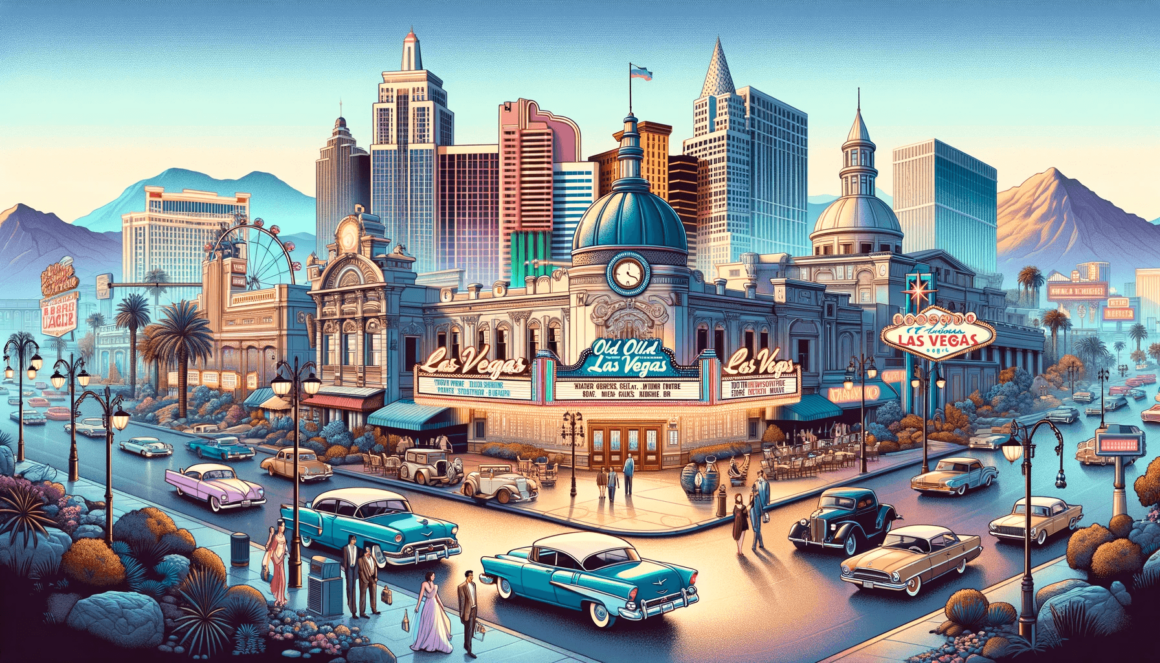
The tale of The Strip began with the arrival of pioneers and the construction of the nearby Hoover Dam in the 1930s. It was an era when Las Vegas was little more than a dusty outpost in the Nevada desert.
However, the fundamental transformation of this barren landscape began with the audacious vision of one man: Benjamin “Bugsy” Siegel. He saw potential where others saw only desolation.
In 1946, he invested in constructing the Flamingo Hotel, a sprawling resort and casino that would become the cornerstone of The Strip.
His involvement marked the beginning of large-scale resort development and drew attention to Las Vegas from the criminal underworld and the entertainment industry.
Side Note
The criminal underworld is sadly embedded deep into the sports industry and gambling.
In 2023, the money laundered in sports corruption cases was around $800 billion to $2 trillion annually, with many reports indicating the involvement of crime groups worldwide.
Today, the Las Vegas Strip is one of the most popular tourist destinations in the world. It is home to some of the world’s largest and most luxurious hotels and casinos and is synonymous with gambling.
The following sections explore the inner workings and defining moments that led to the birth, progress, and expansion of the Las Vegas Strip.
A Timeline of History of the Las Vegas Strip
This detailed timeline showcases the LV Strip’s rich history and evolution, from its early beginnings to its current status as an iconic global destination for entertainment and hospitality.
- 1930: The first hotel-casino, El Rancho Vegas, opens along what would later become the Las Vegas Strip.
- 1941: The destruction of El Rancho Vegas with a fire paved the way for developing more resorts in the area.
- 1946: The Last Frontier Hotel opens, followed by the Flamingo Hotel, financed by notorious gangster Bugsy Siegel.
- 1950s: The establishment of Dunes, Sahara, Sands, and Stardust hotels and casinos, adding to the growing allure of The Strip.
- 1960: The city boasts its famous “Welcome to Fabulous Las Vegas” sign.
- 1960s – 1970s: The iconic Caesars Palace, Circus Circus, and International Hotel (now the Westgate) open, further solidifying The Strip’s reputation as an entertainment hub.
- 1970s: The MGM Grand (now Bally’s) becomes one of the largest hotels in the world.
- 1980s: The Mirage opens, introducing a new era of themed resorts. The Strip transforms with the construction of hotels like the Excalibur and Luxor.
- 1990s: The Excalibur, Luxor, and MGM Grand rise, and The Strip becomes home to some of the largest and most famous hotels in the world.
- 1993: The Luxor opens, featuring an iconic pyramid design.
- 1998: The Bellagio opens, setting new standards for luxury and elegance.
- 2000: The Venetian, with its stunning replica of Venice’s canals, adds to the grandeur of The Strip.
- 2005: Wynn Las Vegas opens, offering a new level of sophistication.
- 2014: The LINQ Promenade and High Roller observation wheel offer new attractions and entertainment options.
- 2020s: The Strip faces significant challenges due to the COVID-19 pandemic, with temporary closures and capacity restrictions.
The 1800s: The Birth of the Las Vegas Strip
The Las Vegas Strip, known for its glitz and entertainment today, has a fascinating history dating back to the 1800s when the desert landscape was full of hidden stories.
Listed below are intriguing events that shaped the Strip during that era:
The Paiute Tribe
Long before Las Vegas emerged, the Paiute Native American tribe inhabited the area. These people had a deep connection with the land, relying on the natural springs in the region to sustain their livelihoods. With their rich cultural heritage, the Paiute people were the first known inhabitants of the Las Vegas Valley, living in harmony with the desert.
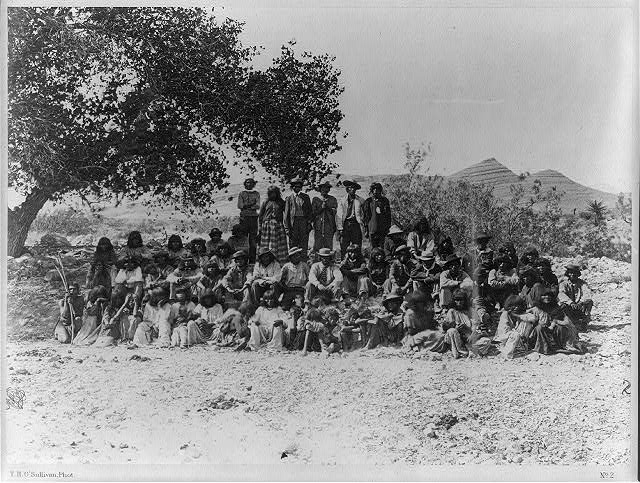
The Meadows (1829)
The name “Las Vegas” derives from the Spanish term for “The Meadows,” a reference to the lush grasslands nourished by the artesian springs flowing in the valley. These springs were a lifeline in the arid desert, attracting a diverse array of wildlife and, eventually, the attention of European settlers.

Mormons’ Failure to Settle (1855)
In the mid-19th century, Mormon missionaries attempted to establish a settlement in the Las Vegas Valley. However, the challenging desert conditions and conflicts with the Paiute tribe led to the eventual abandonment of the endeavor. This early attempt at colonization foreshadowed the difficulties of taming the harsh landscape.
The Arrival of the US Army (1864)
With the expansion of the United States in the late 1800s, the federal government recognized the strategic importance of the Las Vegas Valley as a water source along the Old Spanish Trail. In 1864, the US Army established a fort, Fort Baker, in the area to protect travelers and settlers moving westward. The arrival marked the beginning of the valley’s transformation from an isolated outpost to a place of strategic significance.
Los Vegos Rancho (1835)
Los Vegos Rancho was established in the late 1800s, becoming one of the first European-American settlements in the Las Vegas Valley as more settlers arrived. The ranchers engaged in farming and ranching, utilizing the abundant water supply from the artesian springs. It marked a shift toward agricultural development in the region, setting the stage for further growth.
The 1900s: The Changing Face of the Las Vegas Strip
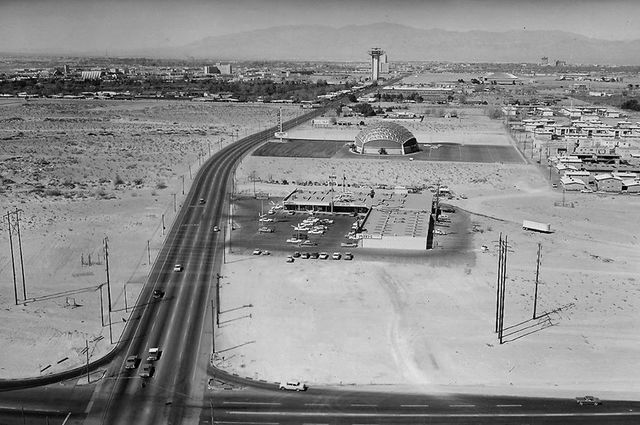
The 1900s marked a period of significant transformation and growth for the Las Vegas Strip, propelling it from a dusty desert outpost into the iconic entertainment destination it is today.
Enter the 20th century and explore the key events that shaped the Strip during this era.
Completion of the Railroads
At the turn of the century, the completion of railroad lines linking Las Vegas to major cities similar to Los Angeles and Salt Lake City facilitated more accessible access to the region.
This development set the stage for increased tourism and economic opportunities.
It’s Official–Las Vegas Gets Incorporated!
1911, Las Vegas officially became incorporated, solidifying its status as a growing urban center in the heart of the Mojave Desert.
It marked the beginning of a transformation that would ultimately lead to the development of the world-famous Las Vegas Strip.
The Underground Gambling Scene: Speakeasies
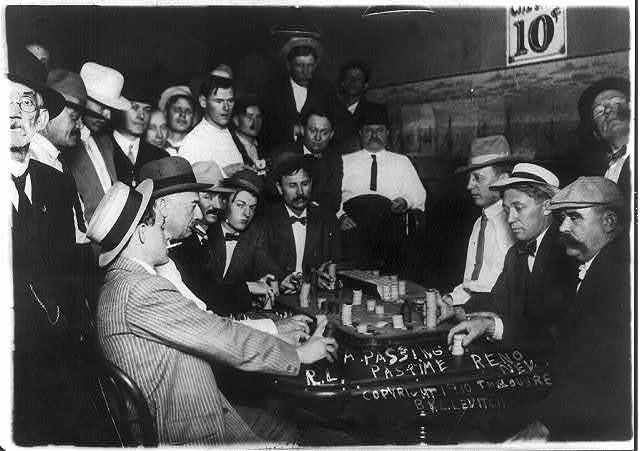
Fun Fact
Speakeasies originate from the US Prohibition era when alcohol was outlawed. The word came from “speak softly shops,” pertaining to a bar selling unlicensed liquor.
The term implies that patrons should speak in secrecy to avoid being detected by police; hence, the phrase “speakeasy.”
During Prohibition (1920-1933), Las Vegas became a hotspot for speakeasies and underground gambling establishments.
The allure of illicit activities attracted visitors and helped establish the city’s reputation for entertainment.
Pair O’ Dice Club
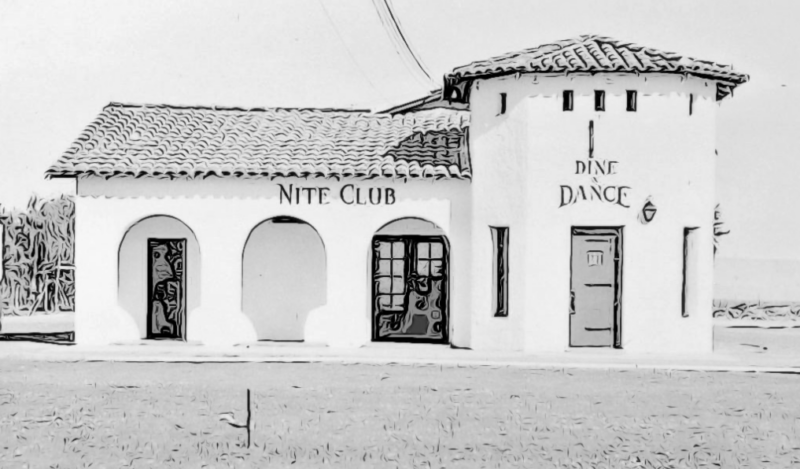
During the early 1900s in Las Vegas, the Pair O’ Dice Club was a significant establishment on the Strip. It was more than just a nightclub; it represented innovation, culture, and progress.
The club’s impact on Las Vegas history is evident today, reflecting its pioneering spirit in shaping the world-famous entertainment capital.
As a famous casino and nightclub, it contributed to the Strip’s entertainment scene, marking the beginnings of the vibrant nightlife that defines the area today.
El Rancho Vegas
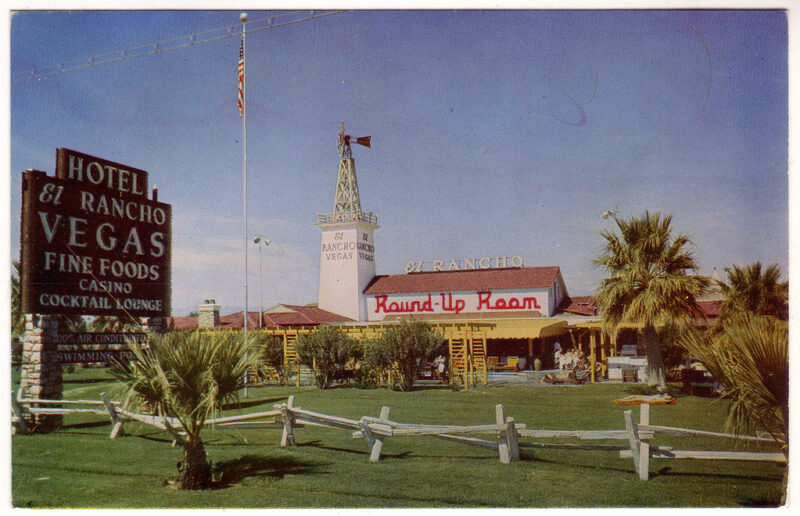
In 1941, El Rancho Vegas, the first resort on what would later eventually develop into the renowned Las Vegas Strip, opened its doors.
It signaled the start of a new era for the city, where entertainment and luxury would become synonymous with the Strip.
Project Hoover Dam Incites an Economic Boom
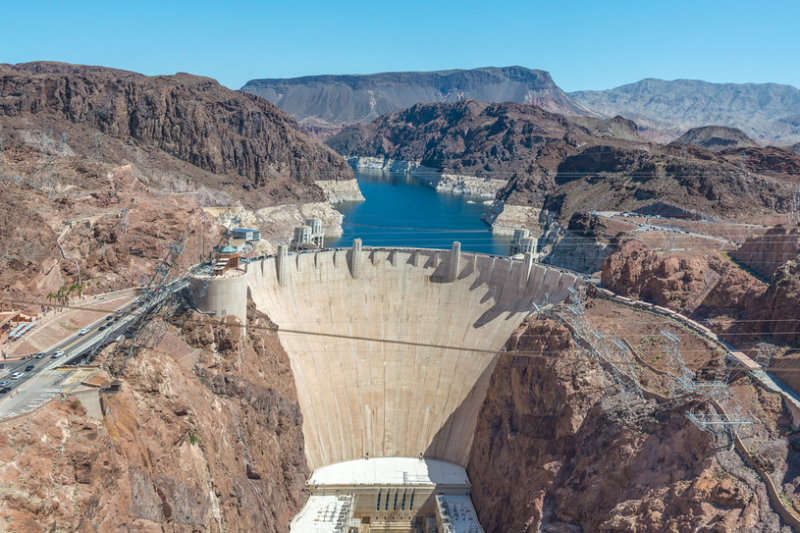
The construction of the Hoover Dam took place during the 1930s and brought an economic boom to Las Vegas.
Thousands of workers flocked to the area, leading to increased demand for entertainment and services.
Bugsy Gets Involved
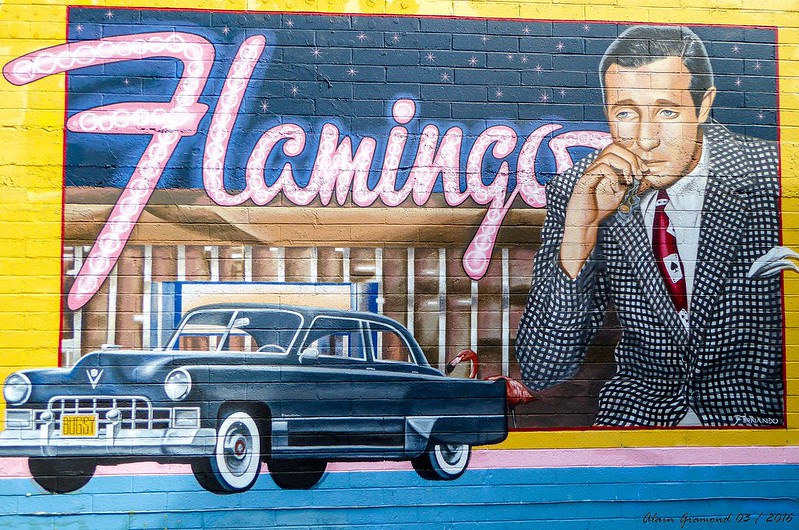
Notorious mobster Benjamin “Bugsy” Siegel was pivotal in shaping the modern Las Vegas Strip.
Bugsy’s involvement in the LV Strip during the 1940s was significant because it began a new era for the city, transforming it into a major entertainment and gambling destination.
His vision, investments, and legacy continue to influence the culture and identity of Las Vegas to this day. His remarkable contributions to the Las Vegas Strip’s formation include:
Pioneer of Modern Las Vegas
Historians and researchers credit Bugsy Siegel for significantly transforming Las Vegas from a small desert town into a bustling entertainment and gambling destination. His vision and investment played a pivotal role in shaping the modern Las Vegas Strip.
The Flamingo Hotel
One of Bugsy Siegel’s most well-known ventures was the creation of The Flamingo Hotel, a lavish casino valued at $6 million that opened in 1946. This resort casino was among the first of its kind, introducing new levels of grandeur and luxury to the city.
Integration of Organized Crime and Gambling
Bugsy Siegel’s involvement in Las Vegas also brought organized crime into the picture. While this association is controversial, it’s significant because it marked the beginning of the intersection between organized crime and the casino industry in Las Vegas.
Las Vegas as an Entertainment Capital
Bugsy Siegel’s vision for The Flamingo went beyond just gambling; he aimed to create a full-fledged entertainment destination. This concept helped establish Las Vegas as an entertainment capital, featuring not only gambling but also live shows, fine dining, and luxurious accommodations.
Cultural Influence
He became a symbol of the romanticized gangster era and contributed to the mystique and allure of Las Vegas as a place where the rich and famous could rub shoulders with notorious figures.
Economic Growth
The Flamingo and subsequent developments on the Las Vegas Strip created jobs and economic opportunities in the region. This progress led to the growth of the local economy and the influx of new residents.
Tourism Magnet
Bugsy Siegel’s investments turned Las Vegas into a magnet for tourists, drawing visitors from across the country and internationally. This influx of tourists was instrumental in the city’s growth.
Expanding the Strip
Bugsy Siegel’s success with The Flamingo inspired others to invest in the Strip, leading to a rapid expansion of casino resorts along Las Vegas Boulevard. This expansion laid the groundwork for the Strip’s world-renowned skyline and reputation.
Continued Legacy
While Bugsy Siegel’s life was cut short by his assassination in 1947, his legacy lives on in Las Vegas.
Over the years, the Flamingo Hotel has undergone changes and renovations, but it remains an iconic establishment on the Strip due to its historical significance.
Las Vegas Becomes Home To The Mob
The mob’s influence on the Las Vegas Strip in the 1900s significantly kickstarted the city’s transformation into a gambling and entertainment capital.
During this period, Mafia families played a crucial role in shaping the growth and character of Las Vegas through organized crime.
These are the key ways the mob impacted the Las Vegas Strip in the 1900s:
- Investment and Development: Mafia figures such as Benjamin “Bugsy” Siegel invested heavily in constructing luxurious hotels and casinos, including the Flamingo Hotel in 1946.
- Underworld Control: While the mob’s involvement brought economic growth to Las Vegas, it also brought criminal activity.
While their presence brought prosperity and glamour, it also came with a darker side of criminal activities and corruption.
The eventual decline of mob influence paved the way for the modern, corporate-controlled Las Vegas Strip we know today.
Guy McAfee Names The Strip
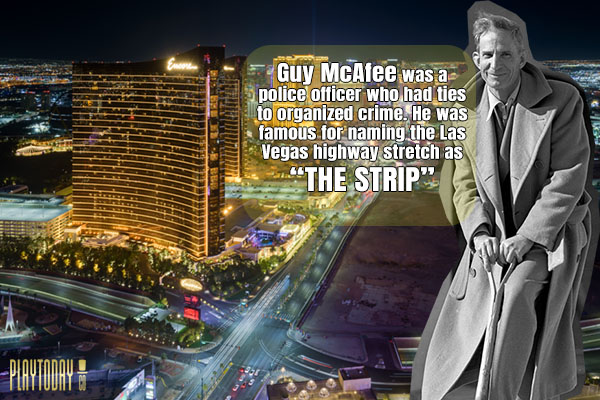
The naming of “The Strip” by Guy McAfee in Las Vegas is a pivotal and defining moment in the city’s history, signifying the inception of an iconic entertainment destination.
This historical milestone profoundly influenced urban development and had cultural and economic impacts.
The Birth of ‘The Strip’
- The name of The Strip occurred in the late 1940s when Las Vegas was evolving from a small desert town into a bustling entertainment and gambling hub.
Guy McAfee’s decision to name the stretch of highway south of downtown Las Vegas as “The Strip” holds historical significance.
It set the stage for transforming the area into one of the world’s most famous entertainment districts.
The Story Behind the Name
- The Strip’s naming was influenced by the need to distinguish this section of the highway from the rest of Las Vegas, creating a clear identity for the emerging entertainment district.
Guy McAfee, a prominent law enforcement figure and casino operator, was instrumental in this process.
His background in law enforcement and business made him well-suited to understand the significance of branding and marketing for the area’s development.
Fun Fact
The creator of the nickname “The Strip” did not intend it to be permanent for Las Vegas. The officials originally intended the designation for the stretch of Highway 91 to be temporary.
However, this simple and catchy name stuck and eventually became synonymous with one of the world’s most famous entertainment districts, lasting well beyond its temporary origins.
How Highway 91 Shaped Urban Development
- Highway 91, which later became part of the Las Vegas Strip, was pivotal in connecting Las Vegas to southern California.
Its location facilitated the inflow of visitors and tourists, contributing to the city’s growth and economic development.
The Cultural and Economic Impact of ‘The Strip’
- The naming of The Strip represented the city’s aspirations to become a global entertainment destination, marking a shift from a gambling-focused town to a place offering diverse entertainment options.
Gambling Gets Legalized
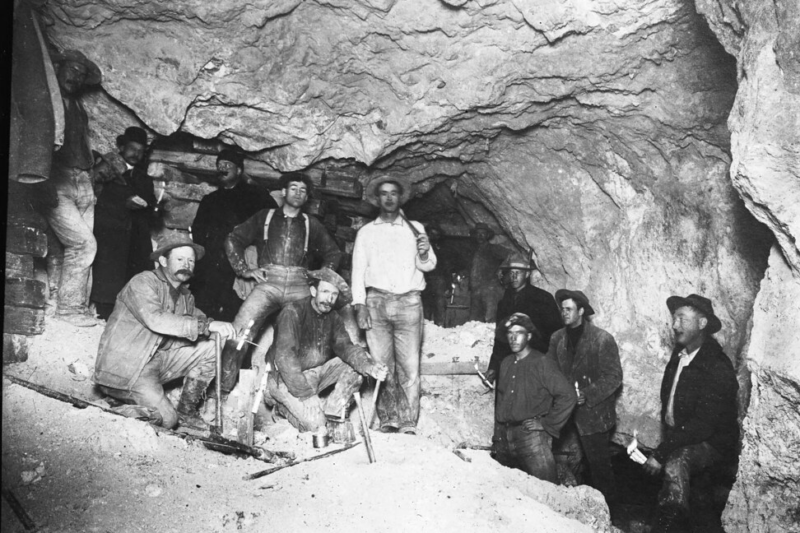
Nevada’s economy struggled in the early 20th century due to the Great Depression. The state’s mineral production dropped by almost half from the previous year.
To boost the economy and generate revenue, Nevada legalized gambling. Governor Fred Balzar signed Assembly Bill No. 98, which legalized card games and slot machines.
This decision provided economic relief during the Great Depression and paved the way for Las Vegas to become a renowned entertainment destination, changing the landscape of this iconic city forever.
Side Note
Gambling legality is expanding in the US as Nevada and 22 other US states legalized sports betting in casinos and online gambling.
Discover the status of legal sports betting worldwide and determine which countries within a specific continent have legalized it.
The Strip Expands!
Throughout the mid-20th century, the Las Vegas Strip experienced a remarkable and rapid expansion, further solidifying its status as a premier entertainment destination.
Various renowned resorts and casinos contributed to the vibrant landscape of Las Vegas as the city expanded.
The Sands
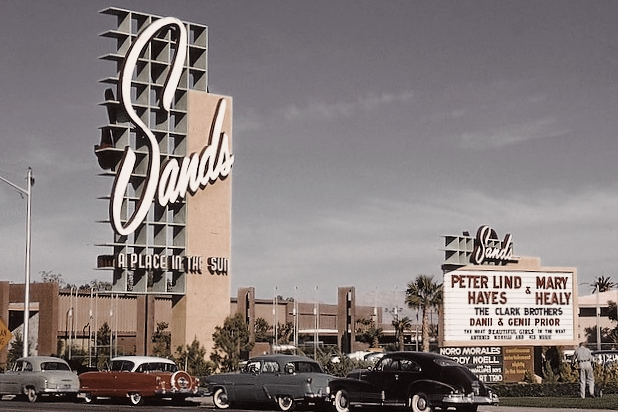
The Sands opened its doors in 1952 and was one of the original establishments on the iconic Las Vegas Strip.
This iconic Hotel was known for hosting top-tier performers, including Frank Sinatra, Dean Martin, and Sammy Davis Jr., who collectively became known as the “Rat Pack.”
This star-studded residency added to the glamour and allure of the Strip, attracting visitors nationwide.
Sahara
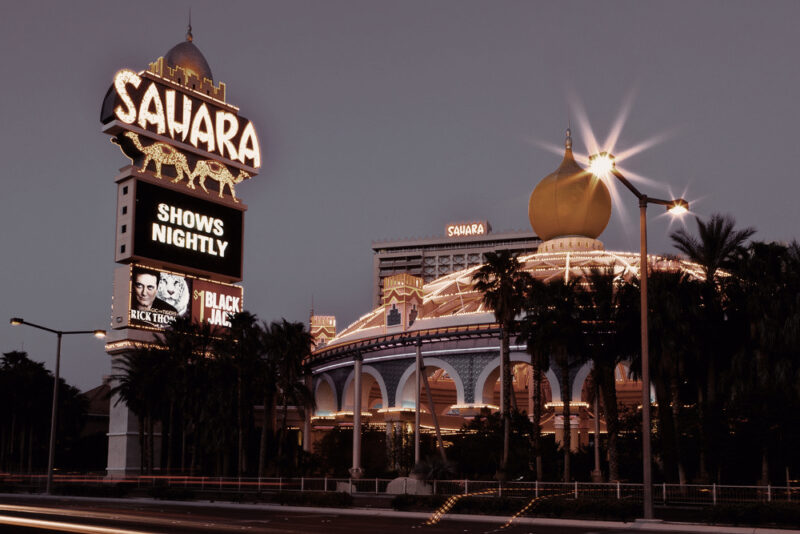
In 1952, the Sahara Hotel and Casino debuted, marking another significant milestone in the expansion of the Las Vegas Strip.
The Sahara was known for its distinctive Moroccan-themed architecture and became a popular destination for gamblers and entertainers.
The hotel-casino was a hub for live entertainment and featured acts such as Louis Prima and Keely Smith, enhancing the city’s reputation as an entertainment hotspot.
Desert Inn
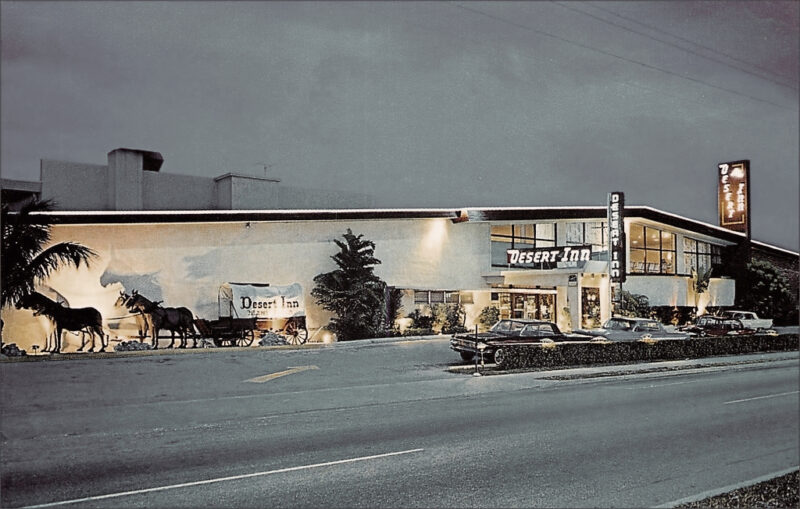
The Desert Inn, established in 1950, was another iconic resort that contributed to the Strip’s growth. With its elegant and upscale atmosphere, it attracted a well-heeled clientele.
It played a unique role in Las Vegas history when it hosted the famous “fight of the century” between Muhammad Ali (then known as Cassius Clay) and Floyd Patterson in 1965.
These resorts shaped the city’s entertainment landscape and played a crucial role in establishing Las Vegas as a global hub for gaming, entertainment, and luxury hospitality.
US Politicians Fail To Get A Slice of That Sweet Las Vegas Strip Money Pie
During the 1900s, investing in the Las Vegas Strip presented a promising opportunity for profitability.
The city had established itself as a hub for entertainment and attracted the entire nation due to specific events and traits, such as:
- Legalization of gambling,
- Growth in population and tourism,
- Limited competition,
- Appreciation of real estate value, and
- Infrastructure development.
Despite the allure of the booming Las Vegas Strip, many US politicians needed help to secure a share of the lucrative profits generated by the city’s casinos and resorts.
Accessing the financial benefits of the Las Vegas Strip had been difficult for politicians as most casinos and resorts on the Strip were owned and operated by large corporate entities.
These corporations had significant resources and lobbying power, which made it tough for politicians to impose taxes or regulations that could reduce their profits.
The Creation of Paradise and Winchester
The development of the Las Vegas Strip led to the creation of the Paradise and Winchester neighborhoods, marking a significant city expansion.
The expansion played a pivotal role in shaping the modern landscape of Las Vegas, contributing to its diverse and dynamic character.
The development of Paradise and Winchester neighborhoods was a response to the changing economic and social landscape of Las Vegas.
Paradise City
The Paradise neighborhood existed in the early 1900s due to various key factors:
Nevada legalized gambling in 1931.
- The increase in tourism in Las Vegas caused a convenient location for the Paradise neighborhood near the Las Vegas Strip. The construction of the Hoover Dam took place during the 1930s.
- This project brought thousands of workers to the area, and many settled in Paradise.
The development of the Las Vegas Strip in the 1940s and 1950s.
- This development led to a surge in demand for housing and other services in the area, and Paradise was able to meet this demand.
Winchester City
Some of the main factors that led to the establishment of the Winchester neighborhood in the early 1900s were:
The presence of the Winchester Repeating Arms Company factory:
- The Winchester Repeating Arms Company was a significant employer in the area, and its factory was a primary economic driver. The company produced a variety of firearms, including the Winchester Model 1873 rifle, one of the most popular rifles in the American West.
The need for housing for workers and their families
- The Winchester Repeating Arms Company factory drove the development of the neighborhood due to the demand for housing from its significant number of employees.
The availability of land
- The Winchester area was relatively undeveloped then, and much land was available for development. The availability made it attractive to real estate developers, who began platting the area into neighborhoods.
Moulin Rouge
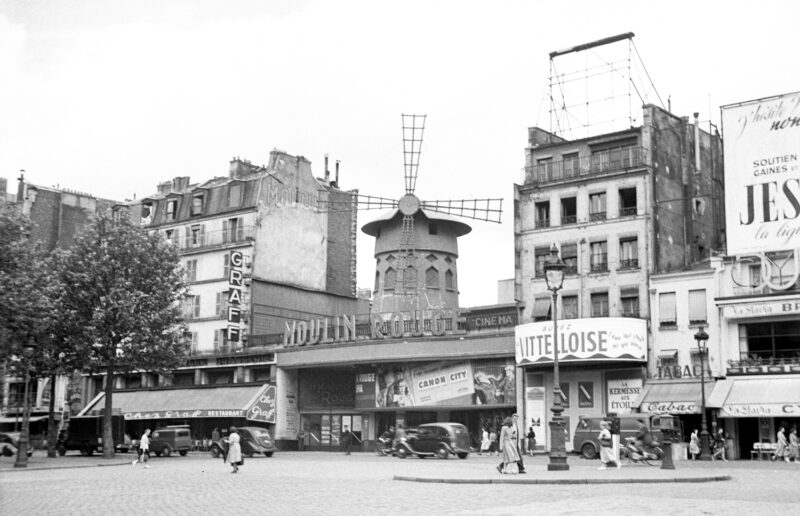
The year 1955 witnessed the opening of the Moulin Rouge, a pioneering integrated hotel-casino in Las Vegas. This event was a significant milestone in the journey toward desegregation in the city.
The Las Vegas Moulin Rouge designers aimed to recreate the original lounge’s atmosphere, complete with its iconic red windmill, can-can dancers, and famous showgirls.
Fun Fact
Mistinguett is most commonly associated with her performances at the Moulin Rouge.
She was one of the most well-known and beloved entertainers of her time, known for her beautiful voice, glamorous costumes, and captivating stage presence.
Her performances at the Moulin Rouge contributed to the lounge’s reputation as a center of entertainment during the early 20th century.
It was an instant success in Las Vegas. It was one of the first significant nightclubs on the Strip, and it quickly became a popular destination for tourists and locals alike.
The Moulin Rouge closed its doors in 1992. However, it remains an integral part of Las Vegas history.
The Rise of Caesar’s Palace
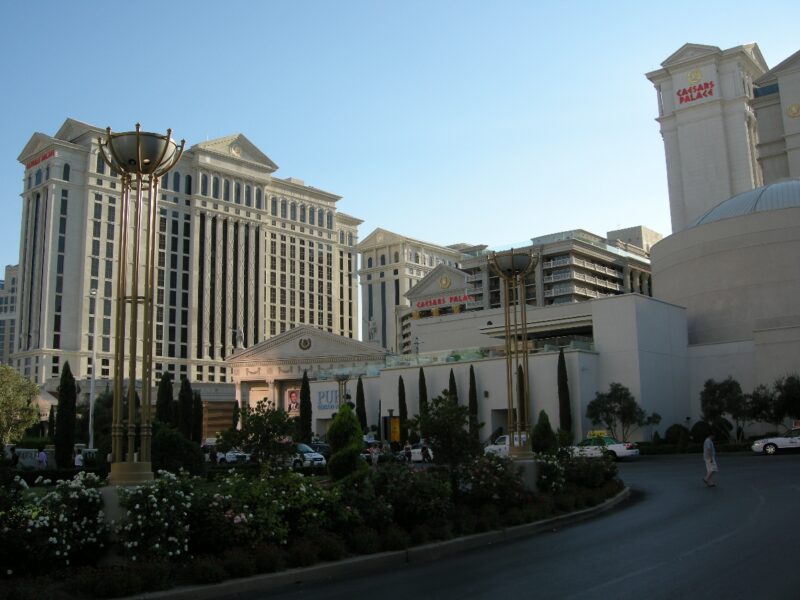
The opening of Caesars Palace in 1966 significantly impacted the Las Vegas Strip entertainment scene.
The first grand-scale casino resort set a new standard for luxury and opulence, featuring a world-class entertainment lineup with some of the biggest names in show business.
The opening of Caesars Palace had several positive impacts on the Las Vegas Strip entertainment scene.
Setting the Stage for Entertainment Excellence
- It raised the bar for other casinos and resorts, which led to a more competitive and innovative entertainment scene on the Strip.
Attracted a New Type of Clientele to Las Vegas.
- It was no longer just a destination for gamblers. People were now coming to Las Vegas for the entertainment as well.
This development helped to diversify the Strip’s economy and make it more attractive to a broader range of visitors.
Las Vegas Strip Became a More Recognized Name.
- The city has attracted new enterprises and investments due to its reputation as a hub for top-tier entertainment, extending beyond just gambling.
The Birth of Mega-Resorts
The Las Vegas Strip has continually reinvented itself, and the mega-resorts birth during the latter part of the 20th century was a defining chapter in its history.
Here’s a closer look at the key moments that led to the rise of these colossal entertainment complexes.
The Monumental Opening of the International Hotel
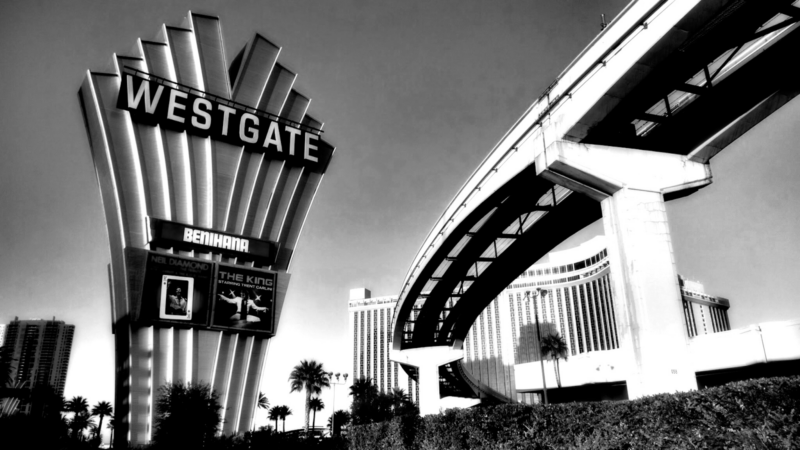
In 1969, the International Hotel (now known as the Westgate Las Vegas Resort & Casino) made its grand debut.
It was the largest Hotel in the world at the time and hosted legendary performers like Elvis Presley.
The Mobs Get Dismantled
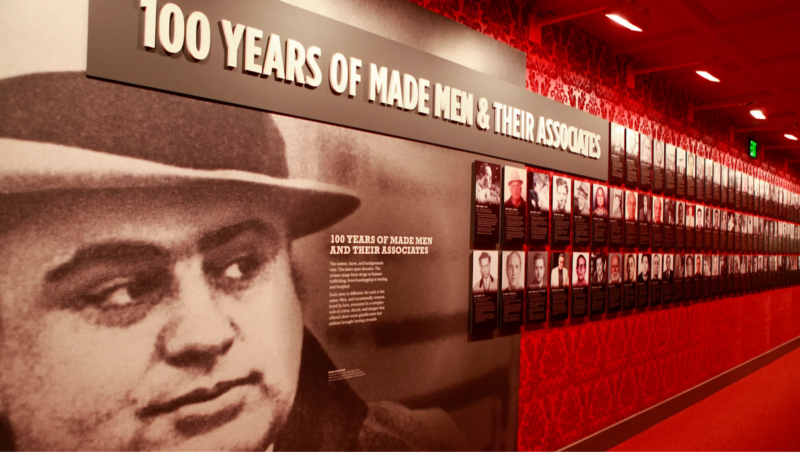
The 1970s saw the federal government cracking down on organized crime’s involvement in Las Vegas casinos. The mob’s influence gradually waned as legal regulations tightened.
The gradual dismantling of the mob’s presence in Las Vegas positively impacted the city’s reputation as a tourist destination.
The mob’s reputation for violence and corruption made people hesitant to visit Las Vegas. However, as the mob’s influence waned, the city became a more legitimate and safe tourist destination.
There are several ways in which the dismantling of the mob’s presence impacted Las Vegas’s reputation as a tourist destination:
- Enhanced Safety: With the decline of the mob’s influence, crime and violence in Las Vegas decreased significantly, contributing to a safer and more secure tourist environment.
- Infrastructure Upgrades: As the mob’s tax evasion and regulatory avoidance subsided, the city could invest in vital infrastructure improvements to enhance the tourist experience and accessibility.
- Boosted Tourism Marketing: As Las Vegas evolved into a more legitimate destination, increased investment in tourism marketing strategies attracted more visitors and enhanced the city’s reputation as a premier destination.
- Elevated Customer Service: Heightened competition forced casinos and resorts to prioritize exceptional customer service, fostering a more welcoming and appreciated tourist atmosphere.
As a result, Las Vegas became one of the most popular tourist destinations in the world.
MGM Grand Hotel and Casino Take Over
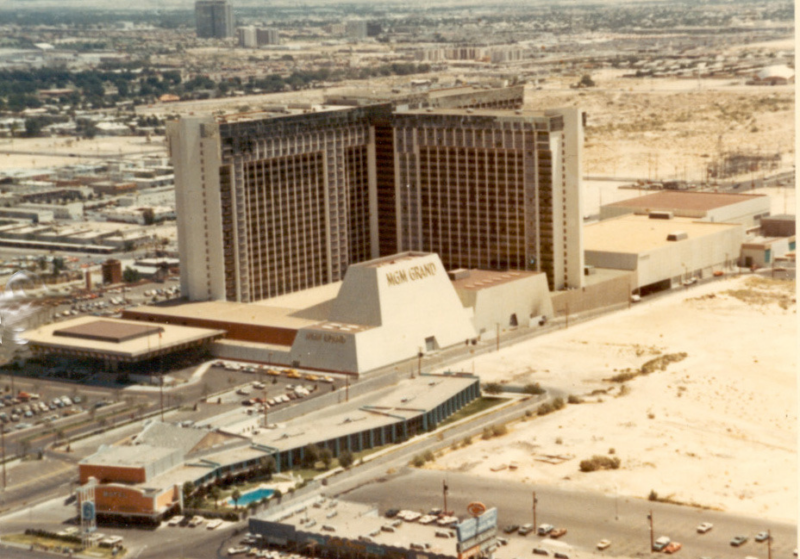
In 1973, the grand opening of the MGM Grand Hotel and Casino set a fresh benchmark for luxury and size in the industry.
It was the largest Hotel in the world at the time and featured groundbreaking amenities.
Fun Fact
MGM still holds the largest Hotel on the Strip, with 5,044 rooms and 171,500 square feet, making it one of the largest casinos in America.
MGM Burns Down
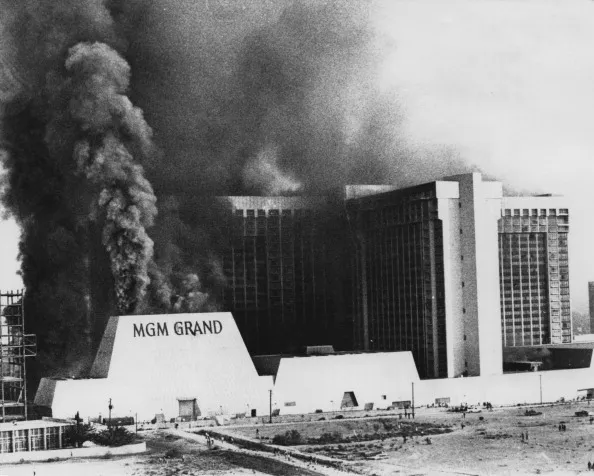
Tragically, the MGM Grand suffered a devastating fire in 1980, resulting in numerous fatalities. This event prompted significant changes in fire safety regulations for large resorts.
The Buyout from Bally Manufacturing
Bally Manufacturing was a leading manufacturer of pinball machines and other gaming equipment. In the early 1980s, the company expanded into casino ownership.
Fun Fact
In the 1970s, Bally’s Casino Hotel opened on the Las Vegas Strip.
This establishment was one of the first themed resorts in Las Vegas, and it featured a distinctive Wild West theme, complete with a Western village façade.
In 1985, Bally acquired the Sands Hotel and Casino; in 1986, the company received the MGM Grand.
The MGM Grand was, at the time, the largest Hotel and casino in the world, and its acquisition by Bally Manufacturing was a major coup.
Bally’s acquisition of the MGM Grand signaled the increasing corporate ownership of Las Vegas resorts, the beginning of the mega-resort era, and many other changes in the Las Vegas casino industry.
The Mirage Starts The Trend of Creativity
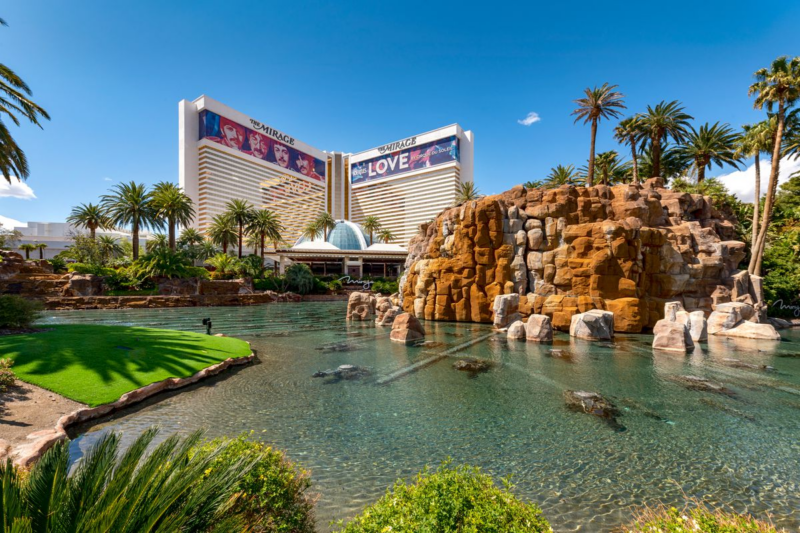
Steve Wynn’s Mirage Resort and Casino, which opened in 1989, played a pivotal role in changing the landscape of the Las Vegas Strip.
It introduced the concept of themed resorts and attractions, setting the stage for a new era of creativity.
Hotels, Hotels, and More Hotels
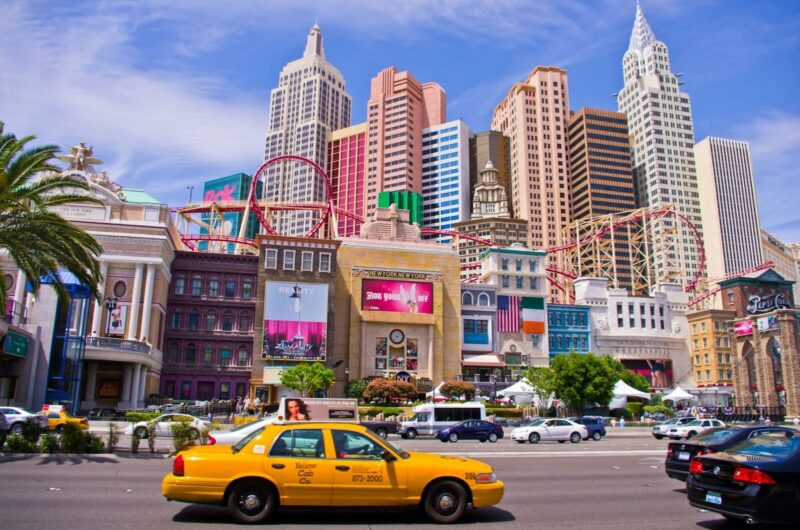
Throughout the 1990s and early 2000s, mega-resorts emerged along the Strip, each more opulent and unique than the last.
Notable additions included:
- Luxor
- Excalibur
- New York-New York
- The Venetian
- Bellagio
- Mandalay Bay
- Paris Las Vegas
- The Palms
- The Wynn
Side Note
While The Strip and Las Vegas are the most famous gambling areas in the US, there are around 1,500 – 2,200 casinos across 44 US states worth exploring.
Each state offers casino-goers different experiences and services with their casinos and hotels, such as themes, various gaming selections, and other attractions.
Steve Wynn’s Part in The Strip’s Expansion
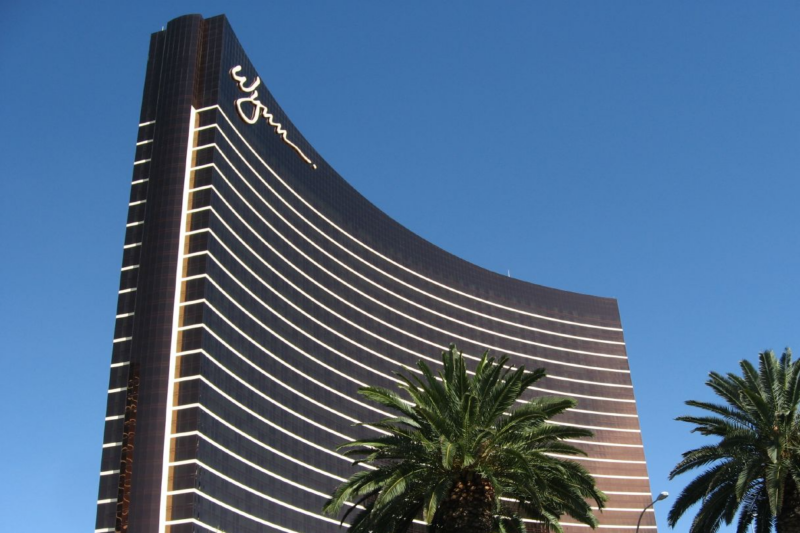
Steve Wynn continued to shape the Strip’s landscape with the opening of Bellagio in 1998, featuring the famous dancing fountains.
He followed it up with the construction of Wynn Las Vegas in 2005, further solidifying his reputation as a visionary in the industry.
The Las Vegas Strip During The Millennium
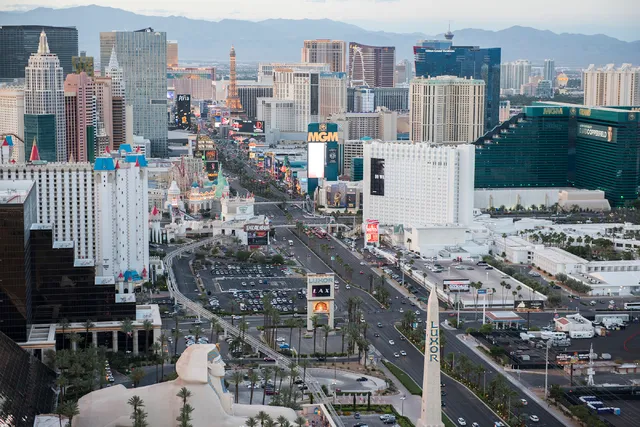
As the world transitioned into the new millennium, the Strip continued to evolve and adapt, maintaining its status as an entertainment mecca.
Here’s a glimpse into the key developments that characterized the Strip during this period.
The Go-To For The New Year’s Eve
The Las Vegas Strip solidified its reputation as the destination for New Year’s Eve celebrations. The iconic fireworks display and extravagant parties drew revelers worldwide, making it a must-visit spot to ring in the new year.
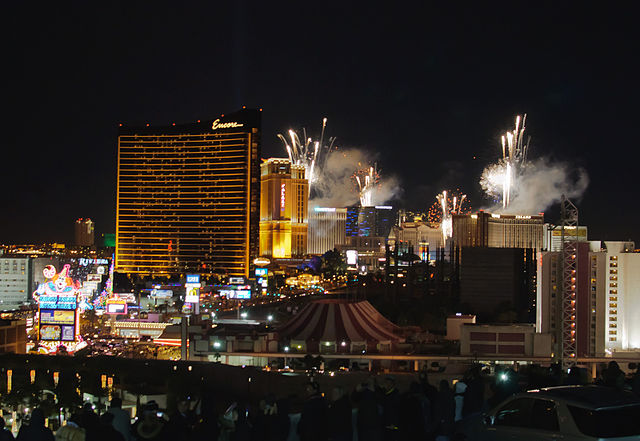
More Expansions
The early 2000s witnessed a flurry of expansions and renovations on the Las Vegas Strip. Existing resorts like Caesars Palace and Mandalay Bay underwent significant transformations to keep up with the ever-increasing demand for luxury and entertainment.
The Creation of CityCenter
In 2009, the ambitious CityCenter project added several hotels, residential complexes, and a shopping and entertainment district. The massive development solidified the Strip’s status as a hub for modern urban living.
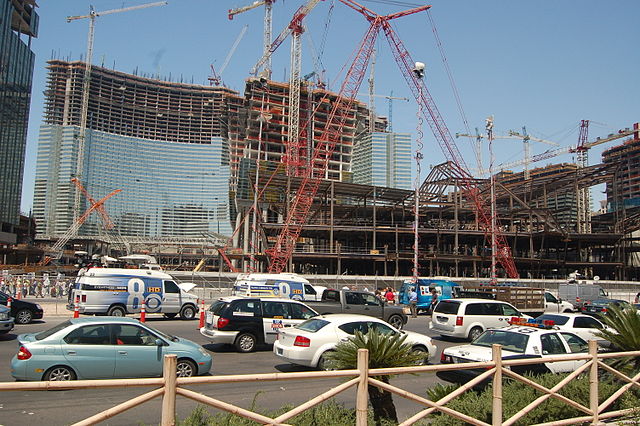
Macau Takes The Lead From The Strip
While the Las Vegas Strip remained a global entertainment destination, Macau in China started to surpass it in terms of gaming revenue in 2006. This shift highlighted the growing competition in the global casino industry.
Renovations and Rebrandings–The Strip Gets a Face Lift 2012
2012 saw several major renovations and rebrandings along the Strip. The Tropicana underwent a significant facelift, and the iconic Sahara Hotel and Casino closed its doors, marking the end of an era.
The Route 91 Harvest Incident Shakes Up The World
2017, the tragic Route 91 Harvest Festival shooting occurred, leaving 60 people dead and over 400 injured, marking the deadliest mass shooting in modern US history. The established Route 91 Harvest Foundation aids the victims and their families.
Park MGM Returns
In 2018, the rebranded Park MGM transformed into the Monte Carlo Resort and Casino, now housing the exquisite NoMad Las Vegas hotel as part of its complex. It marked another transformation in the ongoing evolution of Strip Resorts.
The Strip in 2021
By 2021, the Las Vegas Strip, with resorts like The Venetian, Bellagio, and the Cosmopolitan, had adapted to the changing times. It continued to be a premier destination for entertainment, dining, and gaming, offering a mix of luxury, creativity, and world-class attractions.
Looking Ahead: The Future of Las Vegas in 2023 and Beyond
Las Vegas, specifically the famous Las Vegas Strip, has undergone a remarkable transformation over the years, exemplifying the power of economic growth and innovation.
Several exciting updates and new infrastructure projects are underway on the Las Vegas Strip. Here are a few examples:
- The Venetian Sphere: Formerly known as the MSG Sphere, the structure is a unique entertainment venue that Madison Square Garden Entertainment Corp is building.
It is the largest spherical structure in the world, and it is for concerts, sporting events, and other live entertainment.
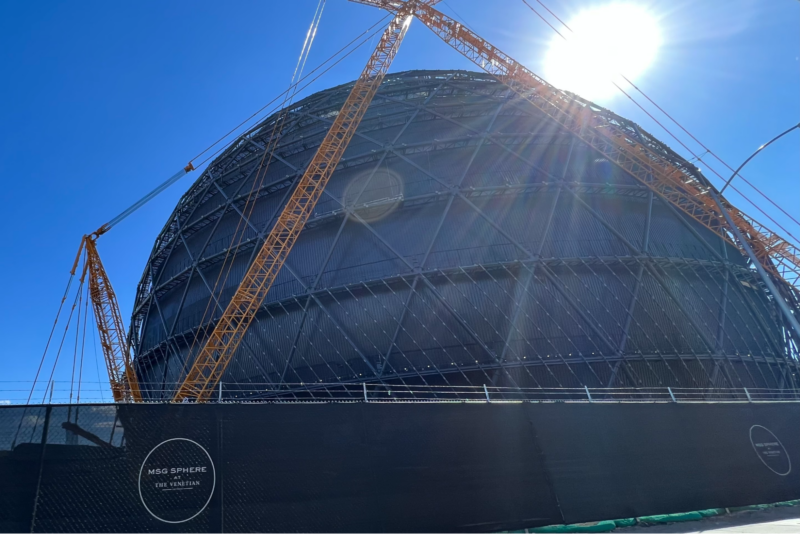
- The Resorts World Las Vegas: The Resorts World Las Vegas is a new casino resort built by Genting Group.
It will be the world’s largest casino resort, featuring various amenities, including a casino, Hotel, spa, and entertainment complex.
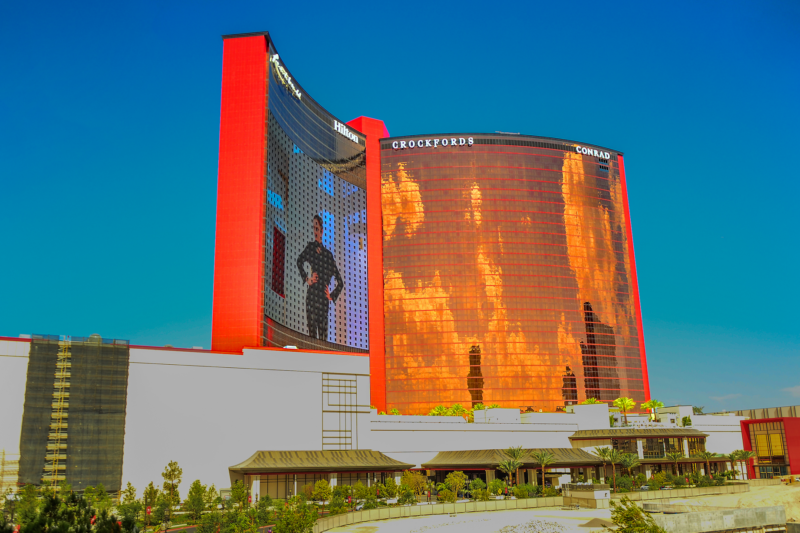
- The Las Vegas Convention Center expansion: The Las Vegas Convention Center is undergoing a significant development that will make it one of the largest convention centers in the world.
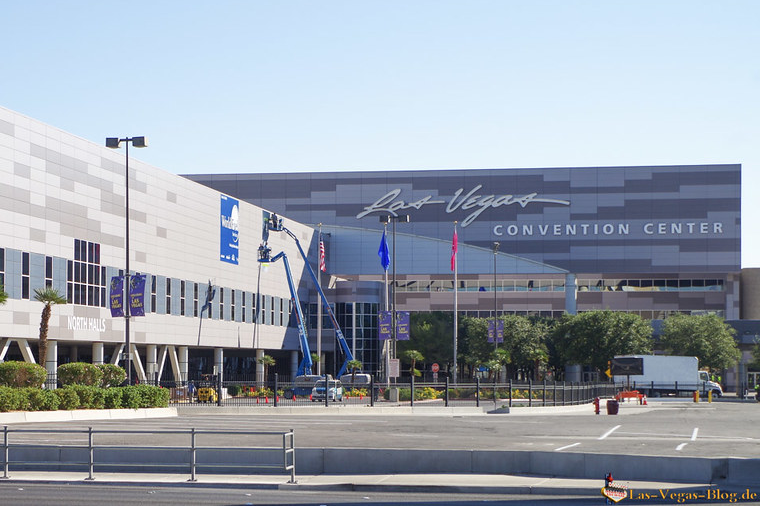
- The High Roller Ferris wheel: It is considered the tallest in the world and provides stunning views of the Las Vegas Strip.
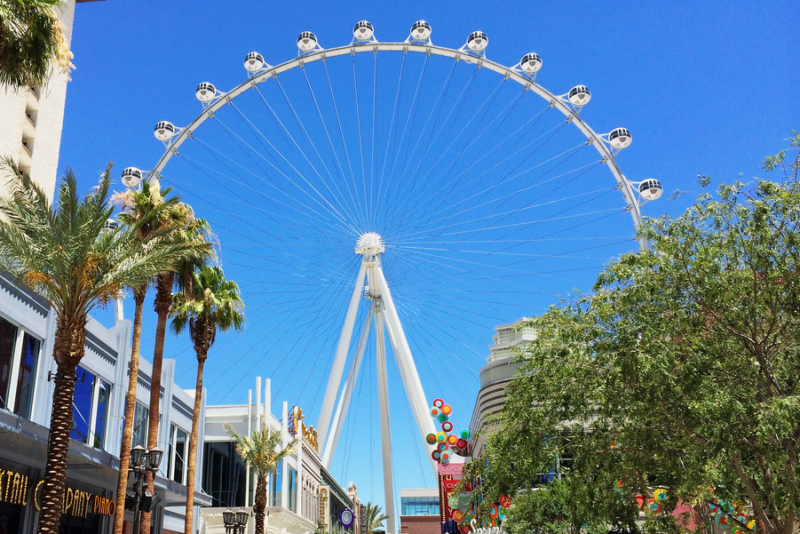
- The Las Vegas Monorail: The Las Vegas Monorail connects the Las Vegas Strip to other parts of the city. It is a convenient way to get around the Strip and avoid traffic congestion.
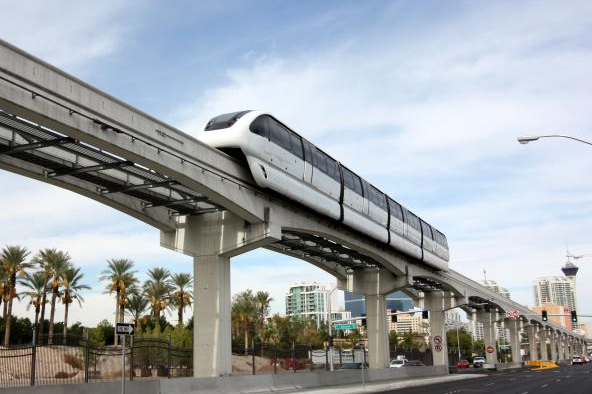
The Strip is home to numerous remarkable attractions, including a collection of casinos that are a must-visit.
This area boasts the highest concentration of casinos in the entire Las Vegas Valley, with a total of 60 casinos to choose from.
Quick Tip
One of the most highly regarded Vegas casinos is MGM. While it provides an exceptional experience for guests, its MGM slots are on the tighter side and may not be the best option for playing.
If you want to try your luck, explore this list of the top Las Vegas Strip casinos.
What to Expect from the Las Vegas Strip
Visitors to the Las Vegas Strip in 2023 and beyond can look forward to a dynamic and multifaceted experience:
- Innovative Entertainment: From high-profile residencies by global music icons to immersive theater productions and esports tournaments, the entertainment options on the Strip will cater to a wide range of tastes.
- Eco-Friendly Initiatives: Sustainable practices will be more evident with eco-friendly architecture, electric transportation options, and eco-conscious dining establishments.
- Technological Enhancements: Expect seamless check-ins, interactive attractions, and augmented reality experiences to enhance your stay.
- Culinary Adventures: The dining scene will thrive with culinary innovations, fusion cuisines, and diverse dining options, from food trucks to Michelin-starred restaurants.
- Wellness and Relaxation: Take advantage of world-class spas, yoga retreats, and wellness centers for rejuvenation.
- Art and Culture: Explore art galleries, installations, and cultural festivals that showcase the vibrant creative scene in Las Vegas.
- Inclusivity: The Strip will become more welcoming to all, with improved accessibility and services for diverse visitors.
Final Words
The American mob left an indelible mark on the Strip’s development. Their investments in luxurious hotels and casinos laid the groundwork for the city’s rise as a gambling and entertainment capital.
Despite its origins in organized crime, the Strip has become a symbol of entertainment, luxury, and excess. It is a testament to the enduring spirit of innovation, reinvention, and pursuit of “The American Dream.”
FAQs
Why was Vegas built in a desert?
The Las Vegas Valley transitioned from a marshy area to a desert, but eventually, the water returned, forming a desert oasis.
When did the Strip become a significant entertainment destination?
The 1950s marked the beginning of the Strip’s transformation into a central entertainment hub with famous performers and lavish shows.
Who owns the Las Vegas Strip?
Vici Properties owns the majority of the Las Vegas Strip when it bought MGM Growth Properties for $17.2 billion after buying out the Venetian.
 BC.Game
BC.Game  BitStarz
BitStarz  Ducky Luck
Ducky Luck  Red Dog Casino
Red Dog Casino